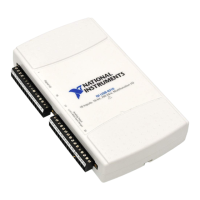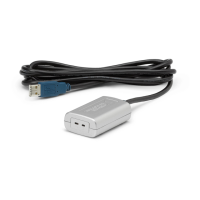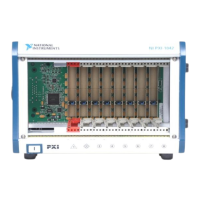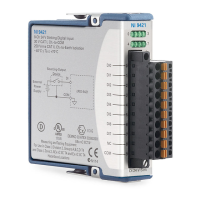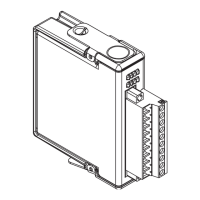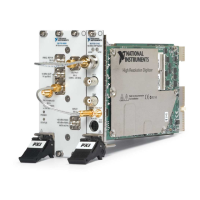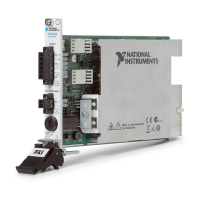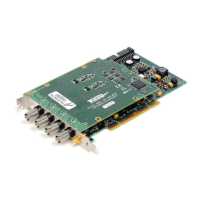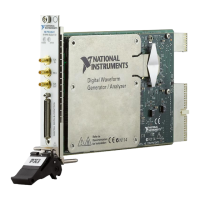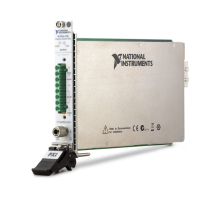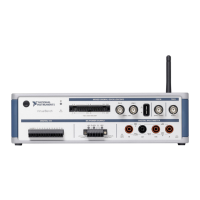Glossary
NI USB-621x User Manual G-4 ni.com
channel Pin or wire lead to which you apply or from which you read the analog or
digital signal. Analog signals can be single-ended or differential. For digital
signals, you group channels to form ports. Ports usually consist of either
four or eight digital channels.
clock Hardware component that controls timing for reading from or writing to
groups.
CMOS Complementary metal-oxide semiconductor.
CMRR Common-mode rejection ratio—A measure of the ability of a differential
amplifier to reject interference from a common-mode signal, usually
expressed in decibels (dB).
common-mode
rejection
The ability of an electronic system to cancel any electronic noise pick-up
that is common to both the positive and negative polarities of the input leads
to the instrument front end. Common mode rejection is only a relevant
specification for systems having a balanced or differential input.
common-mode
signal
1. Any voltage present at the instrumentation amplifier inputs with
respect to amplifier ground.
2. The signal, relative to the instrument chassis or computer’s ground, of
the signals from a differential input. This is often a noise signal, such
as 50 or 60 Hz hum.
convert rate Reciprocal of the interchannel delay.
count The number of events, such as zero crossings, pulses, or cycles.
counter 1. Software. A memory location used to store a count of certain
occurrences.
2. Hardware. A circuit that cou
nts events. When it refers to an instrumen
t
,
it refers to a frequency counter.
counter/timer A circuit that counts external pulses or clock pulses (timing).
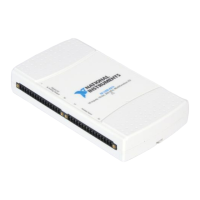
